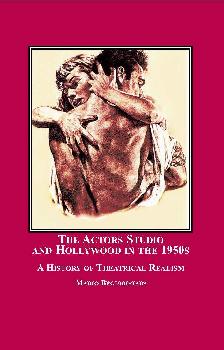This is our backup site. Click here to visit our main site at MellenPress.com
Actors Studio and Hollywood in the 1950s

| Author: | Beguiristain, Mario | |
| Year: | 2007 | |
| Pages: | 432 | |
| ISBN: | 0-7734-5703-8 978-0-7734-5703-4 | |
| Price: | $259.95 | |
Theatrical Realism is an American film movement of the 1950s noted for its high aspirations – to create a significant ‘art’ cinema. Ironically, the films that comprise this movement are virtually forgotten today. Theatrical Realism is Hollywood’s continuation of the Italian Neo-Realist movement. It was a direct result of the confluence of “Method Acting” as taught by Lee Strasberg at the Actors Studio, the screen adaptations of plays by Tennessee Williams, Arthur Miller and William Inge, and the Golden Age of Television.
Reviews
“ ... the definitive study of how the interaction between a specific group of film artists and then-prevalent forces from American popular culture resulted in a particular film style that now belongs to history ...” – Professor Peter Krikes, Loyola Marymount University
Table of Contents
List of Illustrations
Foreword
Preface
Acknowledgements
I. The Search for a Film Style
II. Realism in Film and Theatre
III. Theatrical Realism: The Genesis of a Film Style
IV. The Actors Studio and Hollywood
V. Five Representative Theatrical Realism Films: The Rose Tattoo, The Bachelor Party, Edge of the City, A Face in the Crowd, and The Pawnbroker
VI. The Iconography of Theatrical Realism
VII. Summary and Conclusions
Appendices A and B
Selected Bibliography
Index
Foreword
Preface
Acknowledgements
I. The Search for a Film Style
II. Realism in Film and Theatre
III. Theatrical Realism: The Genesis of a Film Style
IV. The Actors Studio and Hollywood
V. Five Representative Theatrical Realism Films: The Rose Tattoo, The Bachelor Party, Edge of the City, A Face in the Crowd, and The Pawnbroker
VI. The Iconography of Theatrical Realism
VII. Summary and Conclusions
Appendices A and B
Selected Bibliography
Index
